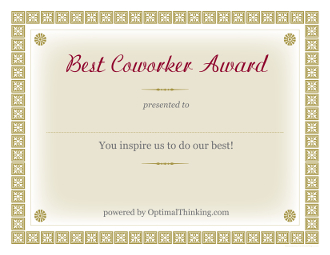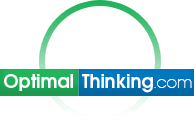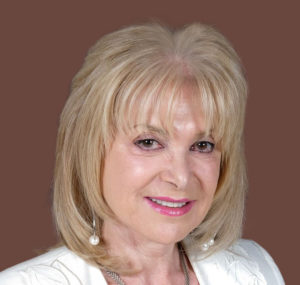Executive Coaching Case Studies
The five executive coaching case studies below represent a few executive coaching programs we have implemented over the past 27 years. As optimization coaching engagements are conducted with strict confidentiality and non-disclosure agreements, information that could identify the coachees has been omitted. Click below to review the case studies that best meet your objectives:
1. Senior Executive with Performance Gaps
2. Developing High Potential Leaders
3. Integrating a Senior Executive from Another Company
4. Gender Diversity
5. Culture Diversity
1. Senior Executive with Performance Gaps
Situation:
The chief technical officer of a multinational corporation was experiencing conflict with his peers and senior management. Although his technical and business acumen were exceptional, he was viewed by his peers and direct reports as egotistical, condescending, and with a short fuse. The company was sidelining him from key initiatives and looking at terminating him.
Approach:
Dr. Rosalene Glickman discussed the executive’s derailing behaviors with the CEO and the global HR leader. A leader optimization program was designed that included the following:
- A meeting with the C-level executive, CEO and HR to facilitate alignment.
- An initial “Are you coachable?” screening.
- A comprehensive 360 degree assessment.
- A one-year weekly coaching program (by video conference).
- Bi-weekly reports to HR.
- Quarterly check backs with the C-level executive, CEO and HR.
- Evaluation of progress at the end of the year, including detailed optimization plans for the future.
During the initial coaching sessions, the dynamics of the executive’s derailing behaviors became apparent. His communications were often confrontational and derisive, leaving no room for others to save face. They explored the impact of his abrasive communications. The executive admitted that he needed to upgrade his conflict management skills and learn how to communicate respectfully in all circumstances.
In an early session, he gained a critical insight. He had simply assumed excessive responsibility for his company’s success. He was often frustrated because he believed that leadership made decisions that did not serve the company’s best interests.
The executive needed to integrate the 4th Principle of Optimization with Optimal Thinking: Accept what is out of your control, and optimize what is within your control.
Fortunately, our company provides an optimization system that empowers executives to best resolve such issues with minimum time loss. As a result, the executive quickly began to let go of what was out of his control.
Together, Dr. Glickman and the senior executive applied strategies for diffusing his destructive impulsive responses. They role played impulse control in numerous confrontational scenarios to develop his confidence in mastering his weakness. They discussed and implemented optimized assertive communication skills to produce optimal solutions.
Outcome:
The executive proudly reported that he was regularly deploying the new learned behaviors. Follow-up 360 degree feedback indicated that he was collaborating respectfully with his peers and senior management. He was demonstrating increased emotional intelligence, managing conflicts well, and his new assertiveness skills enabled him to convey his viewpoints with greater impact. He was even praising others for their contributions. The talented executive was no longer at risk of being terminated. He is now a reliable shining star in the company. And he tells us that his home life has never been better.
2. Developing High Potential Leaders
Situation:
The senior leaders of a major manufacturing company wanted to insure that the next generation of leaders was properly prepared to advance into senior leadership roles. They were determined to develop internal personnel rather than compete for top talent in the external marketplace. Seven high potential employees were selected to participate in our leadership optimization program.
Approach:
Dr. Glickman met with the senior leaders and HR to clarify the leadership traits needed to propel the strategic objectives of the company. An initial “Are you coachable?” screening was conducted to determine the coaching suitability of each high potential employee. 360 assessments were deployed to clarify their current management and leadership competencies. Various performance gaps were revealed, including the following:
- Strategic thinking.
- Inspirational leadership.
- Collaborative decision making.
- Team building.
- Executive presence.
- Organizational savvy.
- Customer focus.
- Conflict resolution.
The strengths and shortfalls identified in the assessment were matched against the company’s strategic requirements. Dr. Glickman reviewed the results with each high potential executive, and together, they created a one-year coaching plan that included measurable behavioral outcomes in three key competencies. Optimal thinking was deployed with realistic, actionable goals to optimize performance.
Dr. Glickman met with the executives on a weekly basis and HR leadership was informed of the progress during bi-weekly meetings. At the end of the 12-month period, the 360 assessment was provided again to all stakeholders.
Outcome:
The Optimal Thinking executive coaching program was given an excellent score by all seven high potential employees. The 360 degree assessment results revealed that the objectives associated with the targeted competencies had been met. Performance appraisals also confirmed that the executives were meeting the targeted objectives.
Five executives were promoted to more senior positions at the end of the first year and the remaining executives have been selected for future promotions. The high potential leader optimization program is now an integral part of the company’s leadership development program.
3. Integrating a Senior Executive from Another Company
Situation:
An oil services company recruited a brilliant C-level executive from a competitor to drive growth through innovative strategic initiatives. Wary of disruption, the CEO wanted to fast track the C-level executive’s success by implementing a comprehensive new leader integration program.
Although the C-level executive was an experienced leader with extensive industry experience, the CEO was concerned about his integration into the company. The senior executive was relocating from Europe and was not accustomed to the company’s culture or the cultural norms of Southern California. He would be leading a team of seasoned senior employees who were apprehensive about working for an outsider.
Respectful of the magnitude of the change, the CEO understood that integration would take more than 90 days, and would most likely take a full year.
Approach:
Dr. Glickman was retained to work with the C-level executive throughout his first year. With input from the CEO and HR, she customized a program with the following elements:
- A meeting with the CEO and HR to determine the critical success factors and likely challenges for the C-level executive’s role.
- A one-year integration program with 90-day optimization segments for quarterly reviews.
- An initial individual assessment of the C-level executive via interviews and surveys.
- Interviews with key stakeholders to educate the new leader about key objectives, organizational culture, and potential obstacles.
- An open meeting with the C-level executive and his direct reports to enable them to get to know each other.
- Written and verbal feedback with the C-level executive.
- A meeting with the C-level executive, CEO and HR to ensure alignment with the integration plan.
- Individual weekly coaching sessions for 12 months.
- Quarterly check backs with the C-level executive, CEO, HR and stakeholders.
- Evaluation of progress at the end of the year, including specific plans for the future.
Outcome:
During the first year, the C-level executive collaborated with Dr. Glickman to embrace the organizational culture and overcome obstacles to best leverage the resources at his disposal. As the leader acclimatized to the new environment and earned the trust and admiration of the CEO and his coworkers, he empowered his team to make the most of unforeseen innovative opportunities.
Now a highly respected member of the company, the return on investment is readily apparent from the company’s growth trajectory, employee retention, and increased profitability.
4. Gender Diversity
Situation:
A talented VP of an engineering company needed to optimize her leadership and management skills. The company was dedicated to enhancing gender diversity and she had been selected by senior management as a potential candidate for promotion.
The VP was often derailed by requests from peers and superiors that had nothing to do with her job description. She would also take over from her direct reports when they failed to complete tasks to her satisfaction. She needed to learn how to best harness team effort, delegate tasks appropriately, and ensure deadlines were consistently met.
Approach:
Dr. Glickman discussed the situation with the C-level superior and HR. A 360 degree assessment was deployed to provide insight into the VP’s strengths, weaknesses, and areas for development. The assessment report revealed that she was exceptionally strong in client relations and the technical aspects of her role. However, she was reluctant to make tough decisions that could upset team members and somewhat conflict averse. This management deficiency stemmed from a general lack of confidence in her performance and the fear of conflict spinning out of control.
Dr. Glickman collaborated with her to design a weekly optimization coaching program to help her resolve everyday workplace conflicts and best deploy the talents and abilities of her people. They reviewed and resolved common workplace scenarios that elicit conflict. The weekly executive coaching sessions focused on tackling issues that were undermining her self-confidence in the workplace. She focused on optimizing her conflict management skills, understanding the strengths and deficiencies of her team, delegating optimally, and best managing projects to ensure deadlines were met.
Outcome:
 At the end of the one-year coaching assignment, the VP was managing conflict proactively and performing her role with self-assurance. She was delegating tasks to her direct reports that had previously taken around 20 percent of her time. By harnessing the innate talent and experience of her team, she was able to focus strategically on maximizing results. She learned optimal scheduling and planning procedures that enabled her to maintain focus and meet deadlines. Her business results exceeded expectations throughout the next 12 months. She also received a Best Coworker Award and was recently promoted to fill an important senior vice president role within the company.
At the end of the one-year coaching assignment, the VP was managing conflict proactively and performing her role with self-assurance. She was delegating tasks to her direct reports that had previously taken around 20 percent of her time. By harnessing the innate talent and experience of her team, she was able to focus strategically on maximizing results. She learned optimal scheduling and planning procedures that enabled her to maintain focus and meet deadlines. Her business results exceeded expectations throughout the next 12 months. She also received a Best Coworker Award and was recently promoted to fill an important senior vice president role within the company.
5. Culture Diversity
Situation:
The CEO of a Fortune 1000 company was concerned that their diversity training program had not shown a significant improvement in issues pertaining to race, age, gender, or sexual orientation. He understood that diversity training in group sessions needed to be supplemented with ongoing support to internalize and deploy the information.
Approach:
Dr. Glickman met with the CEO and HR members to discuss the impact of information hoarding in silos related to cultural and racial intolerance. Two leaders were selected for a six-month individual coaching program. Dr. Glickman worked with these leaders on a weekly basis to access relevant and timely information. She facilitated the profound introspection required to achieve decision-making and workplace behavior free of bias.
Outcome:
The two leaders described themselves as more empathetic and inclusive. They worked diligently to break down the silos and share information. Additionally, they actively sought to optimize diversity in the workplace.
Our Executive Coaching Case Studies Matter
Hundreds of business schools deploy our executive coaching case studies throughout the world. Our case studies are the result of over 30,000 hours of one-on-one coaching to Fortune 500 leaders, YPO presidents, senior executives, entrepreneurs, and rising stars.

















